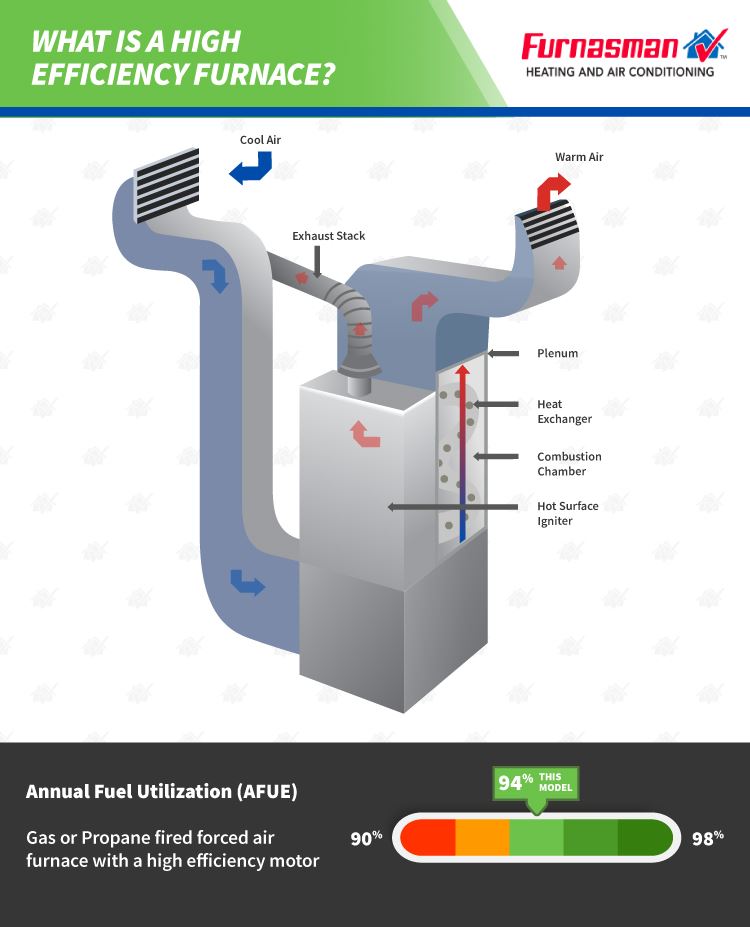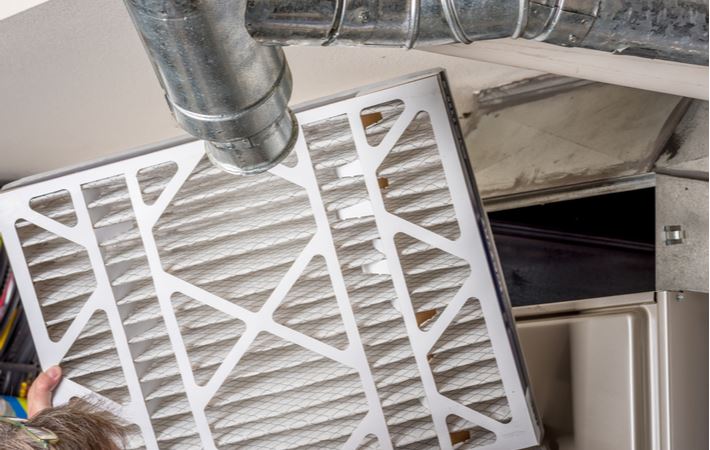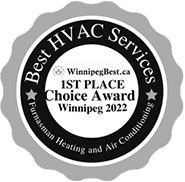Keep Your Home Warm & Your Wallet Happy
With winter just around the corner, many homeowners are bracing for cold weather and, consequently, higher heating bills. A high-efficiency furnace can keep both your family, and your wallet, comfortable all winter long by reducing your heating costs and your carbon footprint.
What is a High-Efficiency Furnace?
A high-efficiency furnace is precisely what it sounds like: a furnace that's extremely efficient. Modern furnaces are significantly more efficient than their predecessors. This means that they not only require less energy (and therefore less money) to heat your home, but they can also help you reduce your environmental footprint.
High-Efficiency Furnaces vs. Traditional Furnaces

While all forced air furnaces require fuel (such as electricity or natural gas) to heat the air, this hot air is then distributed to the various units in your home via your home’s duct system.
High-efficiency natural gas furnaces are fairly similar to traditional furnaces, with just a few key differences. When the thermostat in, for example, your living room registers that the ambient temperature of that room has fallen below the specified setting, it sends a signal to your furnace. This signal prompts the furnace to open its valve, injecting natural gas into the heating system's burners.
Once the air has been warmed enough, it's pushed into the hot-air plenum (the chamber that collects the warm air that is to be distributed) and then into the ducts, which take the warm air to the various rooms in your house. Any gases that are created as a result of burning the natural gas are then vented through a flue or exhaust stack.
High-efficiency furnaces feature additional heat exchange surfaces, allowing them to extract more heat and making the entire heating process more efficient. As the exhaust gases cool, they condense into water. This is why high-efficiency furnaces are also called condensing furnaces.
Because of this condensation, high-efficiency furnaces require a floor drain to collect the water. Any combustion products are vented out the side of the furnace through a PVC or ABS plastic pipe, which sticks out of the side of your house. As such, high-efficiency furnaces don't require chimneys like traditional furnaces do.
Many high-efficiency furnaces also rely on sealed combustion. Traditional furnaces require warm air from inside the home for combustion. To compensate, cold air leaks into the house, pulling down the home’s internal temperature. High-efficiency models are made with air intake pipes, which draw the air required for combustion in from the great outdoors instead of siphoning off warm air from inside your home. This both increases your energy efficiency and makes the furnace safer by reducing the risk of backdrafts (when exhaust gasses are pulled down through the chimney, contaminating the air inside your home).
How is Efficiency Measured?
Furnace efficiency is quantified using a metric called Annual Fuel Utilization Efficiency (AFUE). This allows users to easily determine how much fuel each type of furnace requires to run, but doesn’t account for any electrical energy required to operate fans, pumps, or controls.
The higher an AFUE rating a furnace has, the more efficient it is. To help consumers easily determine which furnaces are the most efficient, the Government of Canada has created a voluntary labelling system (the EnerGuide label). This label communicates the unit’s AFUE score and includes a sliding EnerGuide scale that shows how the unit compares to similar models.
Most high-efficiency furnaces have an AFUE rating of between 90% and 98%, meaning almost no energy is lost during the heating process. To compare, older furnaces are typically only between 56% and 70% efficient.
How Can a High-Efficiency Furnace Save Me Money?
Installing a high-efficiency furnace can save you money in a variety of ways.
Lower Fuel Consumption
Increased efficiency means that less heat is wasted, so your furnace will require less fuel to keep your home warm. Using less fuel means having to pay for less fuel, reducing your heating bill.
If your older furnace only had an AFUE rating of 70%, that means only 70% of the heat generated by that unit went to heating your home, with 30% being wasted. If you upgrade to a high-efficiency furnace with an AFUE rating of 95%, then only 5% of the heat generated is lost. Assuming you set your thermostat to the same temperature, you are effectively getting the same amount of heat while using 25% less fuel.
Government Rebates
Using less fuel is not only good for your wallet; it’s also good for the environment. To help encourage more Manitobans to trade their older furnaces in for high-efficiency models, Manitoba Hydro offers rebates for qualifying families. To find out if your family qualifies, and apply for your rebate, please visit the Manitoba Hydro website.
Maximizing Your New Furnace’s Efficacy

There are a few things you can do to ensure your new high-efficiency furnace continues to run at peak efficiency.
Regular Maintenance
Regular maintenance checks and cleanings not only keep your furnace humming along happily, but it also gives your certified HVAC expert a chance to check for problems that could inhibit efficiency or pose a danger to your health or safety.
To help keep your furnace running in peak condition, Furnaceman offers a variety of protection plans tailored to suit your needs.
Invest in a Programmable Thermostat
A programmable thermostat (particularly a wifi-enabled one) gives you more control over your home’s temperature without having to constantly adjust the thermostat to meet your heating needs.
Programmable thermostats let you pre-set the temperature to match your heating needs depending on the time of day, so you can lower the temperature at night and while you are away at work, then have the furnace kick in so that your home is just the right temperature when you wake up or come home.
Keep Your Furnace Filter Clean
A clean furnace filter does wonders for your furnace’s efficiency. When your filter becomes clogged, your furnace needs to work harder to force warm air through it, burning more fuel to produce the same amount of heat. A dirty filter also lowers the air quality in your home and can exacerbate allergy symptoms triggered by dust or pet dander.
How often you need to change your furnace filter depends on a variety of factors. Under normal conditions:
- A one to two-inch filter should be replaced every three months
- A four-inch filter should be replaced every six months
- A five-inch filter should be replaced once per year
However, these timelines can change based on how often your fan runs, how often you keep your windows open, and whether or not anyone in your house smokes. To learn how often you should be replacing your filter, please read our blog post or ask your certified technician.







